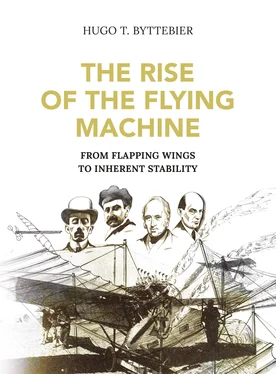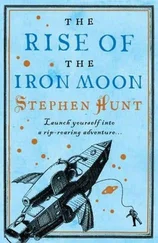Hugo Byttebier - The Rise of the Flying Machine
Здесь есть возможность читать онлайн «Hugo Byttebier - The Rise of the Flying Machine» — ознакомительный отрывок электронной книги совершенно бесплатно, а после прочтения отрывка купить полную версию. В некоторых случаях можно слушать аудио, скачать через торрент в формате fb2 и присутствует краткое содержание. Жанр: unrecognised, на испанском языке. Описание произведения, (предисловие) а так же отзывы посетителей доступны на портале библиотеки ЛибКат.
- Название:The Rise of the Flying Machine
- Автор:
- Жанр:
- Год:неизвестен
- ISBN:нет данных
- Рейтинг книги:3 / 5. Голосов: 1
-
Избранное:Добавить в избранное
- Отзывы:
-
Ваша оценка:
The Rise of the Flying Machine: краткое содержание, описание и аннотация
Предлагаем к чтению аннотацию, описание, краткое содержание или предисловие (зависит от того, что написал сам автор книги «The Rise of the Flying Machine»). Если вы не нашли необходимую информацию о книге — напишите в комментариях, мы постараемся отыскать её.
As early as November 1809 Sir George Cayley published a masterly essay practically inventing the aeroplane. It lay forgotten for 62 years, until found by Alphonse Pénaud. In August 1871 Pénaud flew his Planophore, the first model to resemble a modern aeroplane. He had discovered the secret of inherent longitudinal stability.
The first flying machine built by Clément Ader, in 1889, was the Eole. Powered by a steam engine, he claimed to have flown in it, but there were no official witnesses.
The first recorded, powered and manned flight in history, by Orville Wright in the USA on 17th December 1903, was achieved with a flying machine that required masterly skills to pilot it. The Wrights believed in the technical predominance of their design and tried to turn it into a monopoly, generating much controversy.
Santos Dumont achieved the first world record for speed, distance and duration, taking to the air by means of the first powered take-off in the now standard manner in France on 23rd October 1906.
This book is a comprehensive description of the continuous evolution that made the heavier than air flying machine possible, through the struggle of pioneers such as Victor Tatin, Octave Chanute, Léon Levavasseur with his V8 engines and the Antoinette, S.P. Langley and his Aerodrome, Captain Ferdinand Ferber, Charles Voisin, Louis Blériot and Glenn Curtiss, among others.












